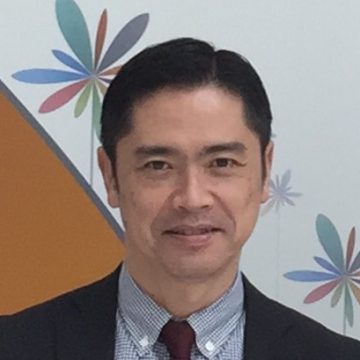
細胞生物学研究
Susumu Kajiwara 梶原 将
教授
医真菌学 感染症学 バイオテクノロジー
略歴
東京工業大学で博士(理学)号を取得した後、キリンビール(株)に研究員として入社。1995年に東京工業大学助手、2001年から准教授を務めた。その間、内閣府総合科学技術会議参事官補佐(2003 -2005)およびオタゴ大学(NZ)客員研究員(2006-2007)も務めた。2012年に東京工業大学教授、2018年に東京工業大学副学長に任命された。その後、2019年に文部科学省大臣官房審議官に就任、2021年に東京工業大学学長特別補佐兼教授として着任。
WRHIへの期待
国際的な組織間科学技術交流拠点形成
| 2021 |
東京工業大学 学長特別補佐 |
|---|---|
| 2021 |
東京工業大学 生命理工学院 教授 |
| 2019 |
文部科学省 大臣官房審議官 |
| 2018 |
東邦大学 医学部 客員教授 |
| 2018 |
東京工業大学 副学長 |
| 2016 |
東京工業大学 生命理工学院 副学院長 |
| 2012 |
東京工業大学 学長補佐 |
| 2012 |
東京工業大学 大学院生命理工学研究科 教授 |
| 2006 |
University of Otago (NZ) Visiting Research Fellow |
| 2005 |
東京工業大学 学長特任補佐 |
| 2003 |
内閣府 総合科学技術会議事務局 参事官補佐 |
| 2001 |
東京工業大学 大学院生命理工学研究科 助教授 |
| 1998 |
東京工業大学 生命理工学部 講師 |
| 1995 |
東京工業大学 工学部 助手 |
| 1993 |
キリンビール株式会社 基盤技術研究所 研究員 |
| 2011 |
東工大教育賞 |
|---|---|
| 2010 |
竹田国際貢献賞 |
| 2009 |
バイオインダストリー協会賞 |
| 2006 |
キリン発明賞 |
| 2021 |
X. Chen, S. Iwatani, T. Kitamoto, H. Chibana, S. Kajiwara; “The lack of SNARE protein homologue Syn8 influences biofilm formation of Candida glabrata” Front. Cell Dev. Biol. 9, 607188 (2021) |
|---|---|
| 2021 |
N. T. Hoa, R. Zhang, N. Inokawa, T. Oura, X. Chen, S. Iwatani, K. Niimi, M. Niimi, A. R. Holmes, R. D. Cannon, S. Kajiwara; “Candida albicans Bgl2p, Ecm33p, and Als1p proteins are involved in adhesion to saliva-coated hydroxyapatite” J. Oral Microbiol. 13, 1879497 (2021) |
| 2020 |
Huang, K. Fujii, X. Chen, S. Iwatani, H. Chibana, S. Kojima, S. Kajiwara; “Fungal NOX is an essential factor for induction of TG2 in human hepatocytes” Med Mycol. 58, 679-689 (2020) |
| 2019 |
K.V. Galkina, M. Okamoto, H. Chibana, D. A. Knorre, S. Kajiwara; “Deletion of CDR1 reveals redox regulation of pleiotropic drug resistance in Candida glabrata” Biochimie 170, 49-56 (2019) |
| 2019 |
Tenagy, K. Tejima, X. Chen, S. Iwatani, S. Kajiwara; “Long-chain acyl-CoA synthetase is essential for the growth of Malassezia spp.” J. Fungi 5, 88. doi: 10.3390/jof5040088 (2019) |
| 2017 |
Shrestha, R. Shrestha, XY Qin, TF Kuo, Y. Oshima, S. Iwatani, R. Teraoka, K. Fujii, M. Hara, M. Li, A. Takahashi-Nakaguchi, H. Chibana, J. Lu, M. Cai, S. Kajiwara, S. Kojima; “Fungus-derived hydroxyl radicals kill hepatic cells by enhancing nuclear transglutaminase” Sci Rep. 7, 4746 (2017) |
